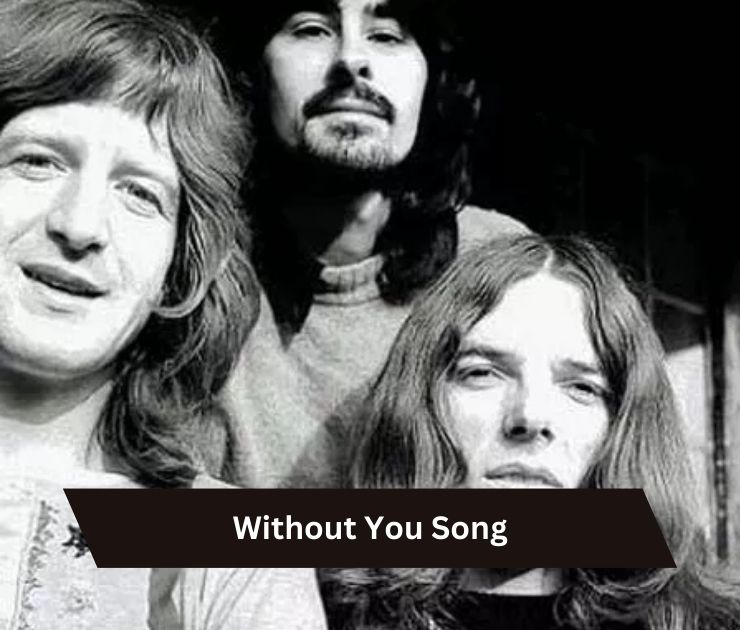The Without You Song has transcended time, resonating with listeners across multiple generations since its release. This iconic track not only showcases the power of emotional vulnerability in music but also highlights the universal themes of love and loss that connect us all.
In this article, we will examine the song’s origins, its influence on popular culture, and why it continues to evoke profound emotions in listeners today.
You can also read: With or Without You
Who Wrote The Song Without You?
“Without You,” a poignant ballad that resonates with themes of heartbreak and longing, was masterfully crafted by Pete Ham and Tom Evans of Badfinger. Released on their 1970 album *No Dice*, the song showcases the duo’s exceptional songwriting prowess, blending emotive lyrics with haunting melodies.
Famous versions of Without You Song
Here are some of the most famous versions of this song.
Harry Nilsson’s Version (1971)
- Harry Nilsson’s Version (1971) of “Without You” transformed the original by Badfinger into a powerful ballad that showcased Nilsson’s unique vocal style and emotional depth.
- Upon first hearing Badfinger’s rendition at a party, Nilsson was so captivated that he initially thought it was a Beatles song, highlighting the track’s melodic appeal.
- Collaborating with renowned musicians like Gary Wright, Klaus Voormann, and Jim Keltner, Nilsson crafted an orchestral arrangement under the direction of Paul Buckmaster, elevating the song’s dramatic flair.
- The result was a sweeping sound that resonated with listeners, leading to its ascent as a worldwide number-one hit, including topping the US Billboard Hot 100 chart.
- In 2021, Rolling Stone recognised Nilsson’s Version (1971) as one of the 500 Greatest Songs of All Time, cementing its legacy in music history.
- Paul McCartney’s endorsement of the track as “the killer song of all time” underscores its impact and the high regard in which it is held among musical legends.
- This version not only showcases Nilsson’s artistry but also represents a pivotal moment in pop music, where heartfelt lyrics combined with lush arrangements struck a chord with audiences globally.
Mariah Carey’s Version (1994)
- Mariah Carey’s rendition of “Without You” was released on January 21, 1994, as the third single from her album *Music Box*.
- This version draws heavily from Harry Nilsson’s interpretation (1971), rather than the original by Badfinger, showcasing Carey’s vocal prowess and emotional depth.
- The release of this powerful ballad coincidentally came just days after Nilsson’s passing on January 15, 1994, adding a poignant layer to its reception.
- In the U.S., it was promoted as a double A-side with “Never Forget You,” further solidifying Carey’s dominance in the pop and R&B charts during that era.
- Carey recalled hearing the song in a restaurant and instantly recognising its potential to resonate with audiences worldwide, a testament to her musical intuition.
- The song not only achieved commercial success but also revitalised interest in Nilsson’s original work, introducing it to a new generation of listeners.
- Mariah Carey’s version remains a benchmark for emotional balladry, highlighting the timeless quality of the song and its enduring legacy.
Without You Song Chart Success
- The song peaked at No. 3 on the US Billboard Hot 100, maintaining this position for an impressive six weeks.
- It became her biggest hit in Europe, topping charts in multiple countries across the continent.
- In the UK, it debuted at No. 1 and held that spot for four weeks, ranking as the 7th best-selling single of 1994.
- Switzerland embraced the track with 10 weeks at No. 1, while Austria and Sweden both celebrated it for 8 weeks at the top.
- Belgium saw the single reign for 7 weeks, while Germany and Iceland each enjoyed 4 weeks at No. 1.
- The song’s enduring popularity is reflected in its inclusion in several compilations, such as #1’s (1998), Greatest Hits (2001), and The Ballads (2008).
Conclusion
Without You Song stands as a significant piece of music history that has shaped the emotional landscape of countless listeners. Its ability to evoke deep feelings and memories demonstrates the power of song as a universal language.
Over the years, various renditions have introduced the track to new audiences, solidifying its status as a beloved classic. The song’s relevance persists as it continues to inspire artists and listeners alike, illustrating how music can bridge generational divides.











